Blue Gularis Killifish are among the most visually appealing killifish species available. So many tropical fish keepers consider them to be among the most well-known and highly sought after of all killifishes.
Consider the following information of killifish and their requirements, which will help you decide whether they are the ideal aquarium fish for you or not.
General Information
It is known variously as the blue gularis, golden pheasant gularis, or red aphyosemion, and it is a species of toothcarp that is native to the Niger delta region. This species can only be found in two countries: Nigeria and Cameroon. The species is named after Bror Yngve Sjöstedt (1866 – 1948), a Swedish naturalist who discovered the type specimen near a waterfall by the Ndian River, in the Ndian department, Cameroon’s Southwest Region.
This species exhibits sexual dimorphism in its male and female forms. The males are more colorful and bigger than the females, and they display a variety of eye-catching colors. They are far larger than any other members of their genus, reaching lengths of 14 cm (5.5 in). It is a robust and predatory species that preys on invertebrates as well as tiny fish and other small animals. Nonetheless, this species doesn’t even rank among the largest; a case in point is the Gulf killifish (Fundulus grandis), which can reach a maximum length of 18 centimeters
Sexing
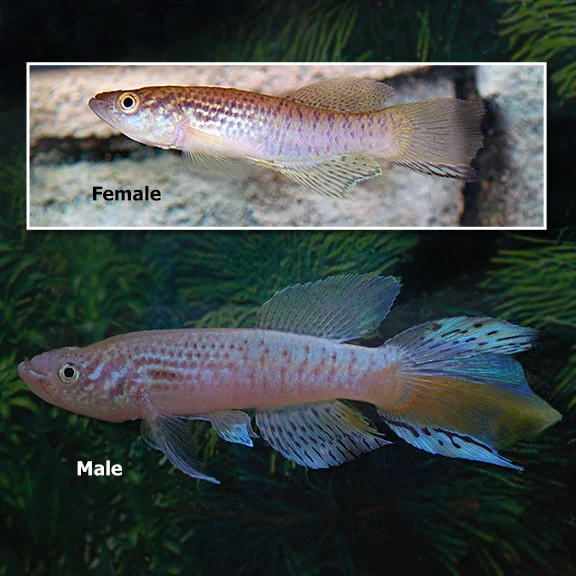
Blue Gularis Killifish is a large, colorful, semi-aggressive, and extremely colorful species of the genus Gularis. It is able to produce long spikes or streamers from its tail tips, which frequently appear on the tips of the head.
Unlike females, males have a different color pattern that is mostly blue on the back as well as orangeish colored on the flanks, having dark reddish-brown stripes running through it. The sides of the fish are reddish in hue, with white dots placed on top of them, and the head has white spots with red patterns as well.
A brilliant blue and red coloration distinguish adult males, which also have a characteristic three-pronged “ice blue” colored tail that is speckled with irregular black striations and dots.
Light to flaming orange is used to paint the center of the three-pronged tail, with a faint black outline to distinguish it from the other two prongs. There are many brown patches on their pectoral fins, which are trimmed with white along the outside borders and splashed with white spots on the inside. The dorsal fin is golden blue in color and has a pattern that is similar to the caudal fin.
Female Blue Gularis are generally smaller than males and do not have the bright colors as the males. They are normally a drab gray to a brown hue, with faint black dots, stripes, and reddish patches on the fins, as well as faint light red bars behind the eyes, and they have a light red bar behind the eye.
Breeding
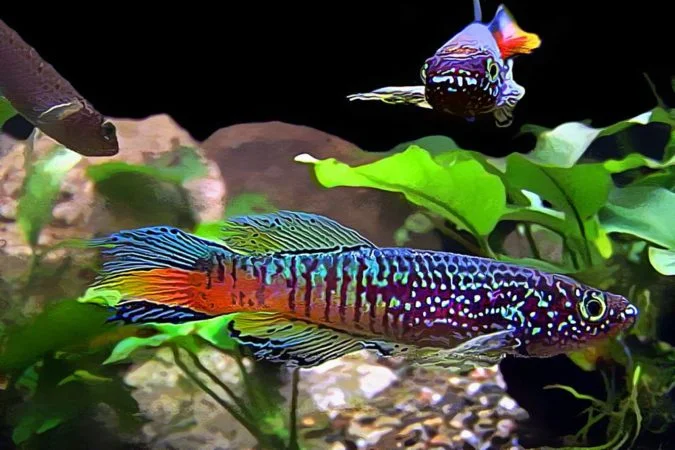
Breeding is feasible because of the fact that it is a substrate spawner. When it comes to spawning this fish in an aquarium, there are various different techniques to choose from, and a lot of it comes down to personal opinion. Space is not a concern, though, as a trio of fish may be successfully hatched in an aquarium as tiny as 15′′ x 8′′ x 8′′.
The use of a tiny, air-driven sponge filter to minimize stagnation in killi breeding settings is not a terrible idea, since many breeders do not utilize it in their killi breeding setups. pH 6.5 water (although there have been reports of this species being successfully produced in water as high as pH 8.0) and a temperature of 74-77°F are ideal conditions for this species’ breeding. It is recommended that the tank not be lighted, and that peat filtration be used.
The fish should be fed a diversified diet of live and frozen items while being conditioned. Maintaining separate conditioning tanks for each gender and choosing the best males and plumpest females before putting them in the spawning tank is the best method of keeping the sexes apart. This provides females with time to recuperate between spawnings. In nature, eggs are laid in the substrate; however, in the tank, the spawning medium may be any of the following: a layer of peat moss on the tank floor, spawning mops, or clusters of fine-leaved plants like java moss. The use of peat moss is widely regarded as the most productive way.
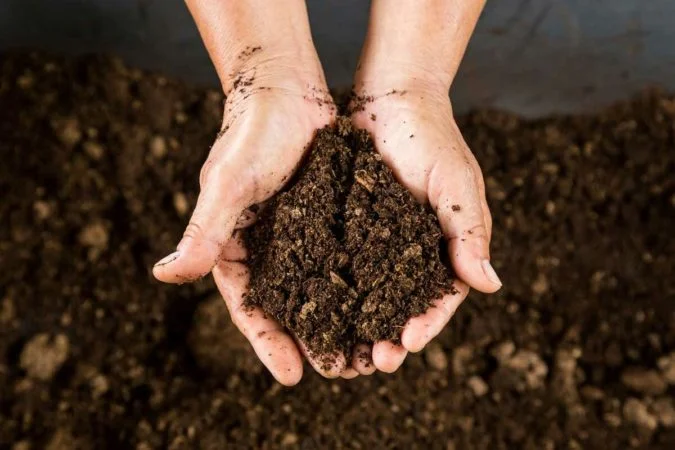
If the water conditions are favorable and the fish are in excellent health, spawning should be a straightforward process. Even though the eggs and fry may be left in the fish tank to hatch with the parents, some of the eggs and fry will be eaten by the parents. If you want to nurture a healthy group of baby fries, you should remove the eggs. It is recommended that each trio be allowed to spawn for no more than a week before being returned to the conditioning aquariums. The spawning process is difficult on the fish (especially the females), and if they are left for an extended period of time, they might grow exhausted and feeble.
Once the eggs have been extracted, they may be incubated in either water or peat moss. It should be noted that fungus tends to infect fewer eggs when the latter is used.
If the eggs are to be incubated in water, they may be moved to a small aquarium filled with water taken from the spawning tank to a level of 1-2 inches and containing about 1 to 3 drops of methylene blue, based on the volume. It is imperative to keep the container in darkness (eggs are especially vulnerable to light) and to inspect it daily for fungised eggs, which ought to be removed with a pipette. Hatching will take around 21 days or so depending on the temperature.
In case you incubate in peat moss, I recommend removing the peat moss from the aquarium and letting it dry for 2 or 3 hours on newspaper. It should then be kept refrigerated at 70-75 degrees Fahrenheit in a plastic bag (the zip-lock kind works well). The date, hatching date, and species of each egg should be written on the outside of each bag if you are spawning numerous species or many broods to avoid any catastrophes from occurring.
It is typically possible to stimulate hatching by simply putting the eggs in the raising tank after 10 to 12 weeks of incubation. The soaking of the eggs promotes the hatching of the eggs. Feed brine shrimp nauplii and/or microworms to the fry as early as hatching, but it will take around 2 weeks to introduce bigger, frozen species to the fry diet. The water level must be maintained fairly shallow at first, but as the fry develops in size, the level may be raised.
Blue Gularis Killifish Eggs: The Hatching Process
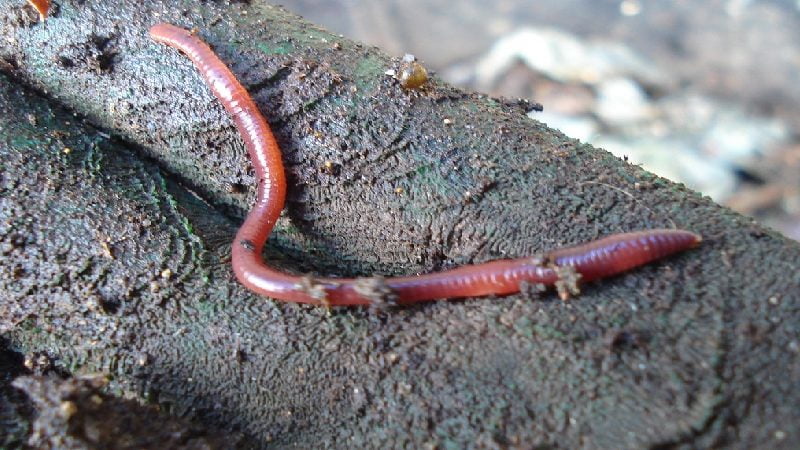
When I obtained eggs of Blue Gularis (Fundulopanchax sjoestedti) in peat, I just needed to add water. I was able to witness free-swimming fry within an hour or two of the peat settling to the bottom. Wondering how it all works made me ponder. How quickly does it occur?
I decided to dig a little further to get to the bottom of these issues. I retrieved some eggs from the peat, put them in a petri dish, and filmed the entire process.
When you soak eggs for five to ten minutes, you will be able to see movement within. There is a precise movement of the fry within the bait as if they are searching for the best place to emerge from. It will take them 5 minutes to break the eggshells, and you’ll see tails or heads emerging from them.
It didn’t take long for the whole fry to come out of the eggshell. Within two to three minutes of coming out, they begin to get their act together. In the process of coming out of the egg, they bump into each other as if they cannot see. Additionally, they swim erratically, as if they don’t know where they’re going. Within a few minutes, they have learned everything, and after about ten minutes, they start eating micro worms.
Feeding
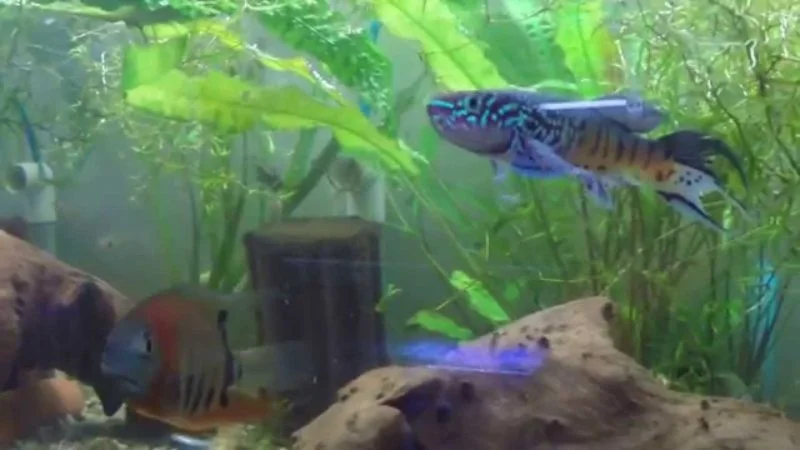
Blue Gularis are omnivorous in their native environment, consuming a wide range of worms, crustaceans, mosquito larvae, tiny fish, and animal debris. The following foods will support their growth in an aquarium: live or frozen blackworms, white worms, brine shrimp, bloodworms, daphnia, tubifex, and chopped earthworms.
Despite the fact that they will sometimes consume prepared and freeze-dried meals, this should not be their major source of nutrition.
In a community tank, shouldn’t keep them with little guppies, because they will hunt them down and consume them if they are not properly separated.
Top 8 Best Blue Gularis Killifish Tank Mates
The blue gularis killes can be kept in a community tank with settings similar to their natural habitat. The ideal blue gularis killifish tank mates are those with peaceful to semi-aggressive temperaments – similar to theirs and having a large size that cannot be considered foods.
The large species from the Cichlids (such as Severum and Angelfish) and Characins (such as Discus Tetra and Glass Bloodfin Tetra) can be good choices for adding into a large community tank with larger killifish like the blue gularis.
Here are some species to accompany the blue gularis killes that you can consider:
Severum Cichlid
- Scientific Name: Heros severus
- Origin: South America
- Water temperature: 26 – 27°C (79 – 81°F)
- Water pH: 6.0 – 6.5
- Size: 8 inches
- Temperament: semi-aggressive
- Lifespan: up to 10 years
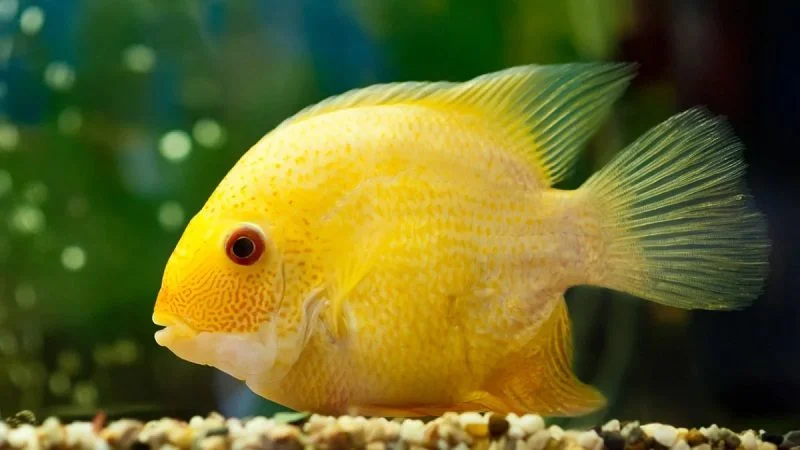
Severum Cichlids is a low-maintenance freshwater species and belongs to the Cichlids family. Their other common names are Severums, Banded Cichlids, and Poor Man’s Discus.
The Severum is generally peaceful and has a size of around 8 inches, making them suitable for being one of the ideal blue gularis killifish tank mates.
However, during the Severum’s spawning period, their temperament can become more aggressive and territorial.
Angelfish
- Scientific Name: Pterophyllum
- Origin: South America
- Water temperature: around 27°C (80°F)
- Water pH: 6.8 – 7.0
- Size: ~6 inches
- Temperament: semi-aggressive
- Lifespan: more than 10 years
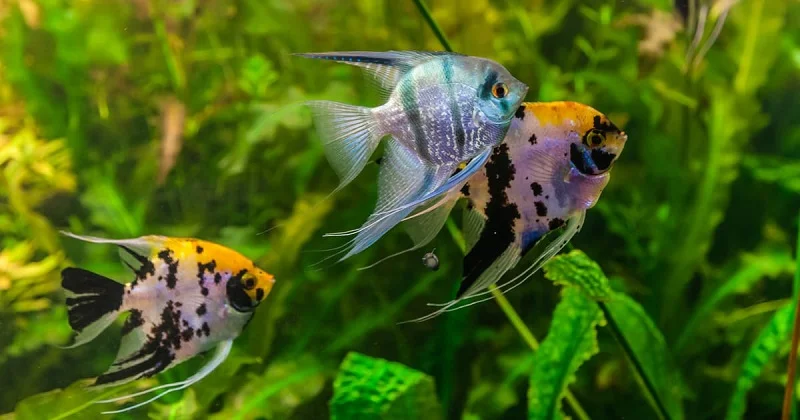
Angelfish is another species of the Cichlids family. They are hardy fish and have an omnivorous diet. They prefer inhabiting freshwater environments with a slow current.
They are active, showy fish that swim in the mid-levels of the tank. The Angelfish is more active in the daytime than in the nighttime.
Just like many of the cichlids, they act relatively peaceful toward other fishes but become aggressive in the spawning season.
Discus Tetra
- Scientific Name: Brachychalcinus orbicularis
- Origin: tropical South America
- Water temperature: 18 – 24°C (64.4 – 75.2°F)
- Water pH: 5.0 – 7.5
- Size: ~3.5 inches (~9cm)
- Temperament: Peaceful
- Lifespan: 5 years
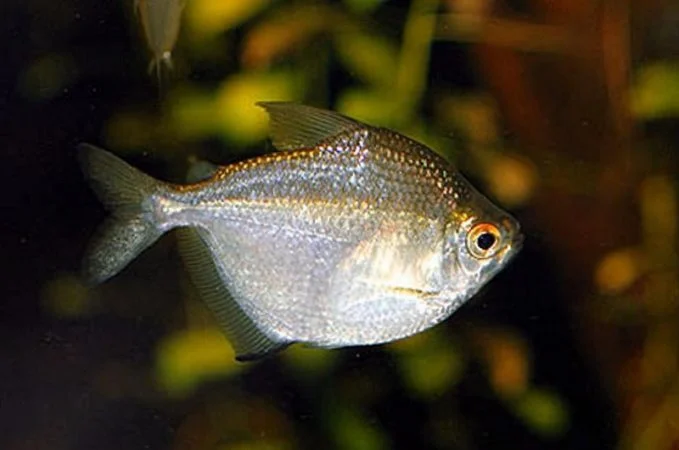
This peaceful Discus Tetra belongs to the Characins family and naturally inhabits lowland rivers, creeks, and tributaries.
They have a peaceful temperament but can give a threatening sense to the tiny and the much more quiet fish owing to their relatively big size. Therefore, they can be suitable for companying quite larger or similar-size species. Yes, they can be a good tank mate for your blue gularis killifish.
Note that you should keep the Discus Tetra in decent numbers to avoid them getting aggressive since they may have fiery behaviors to maintain their hierarchical position within their group.
Glass Bloodfin Tetra
- Scientific Name: Prionobrama filigera
- Origin: South America
- Water temperature: 23 – 27°C (73 – 80°F)
- Water pH: 6.0 – 7.5
- Size: 2.4 inches (~6cm) (average)
- Temperament: Peaceful
- Lifespan: 5 – 8 years
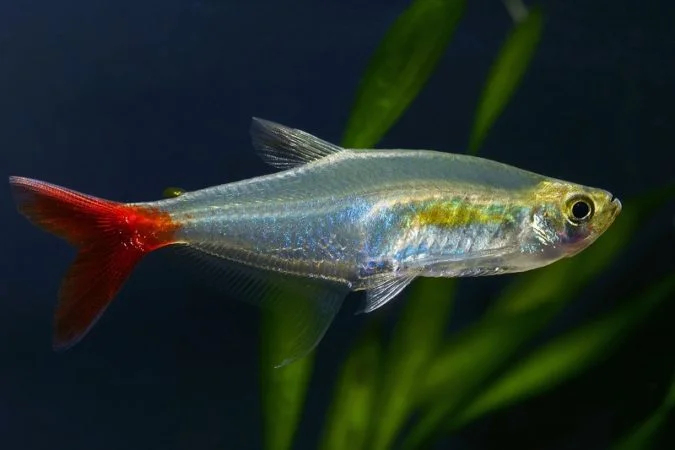
Included in the Characins family, the Glass Bloodfin Tetra is generally peaceful and suitably in a community tank with species sharing similar water conditions.
Armored Catfish
- Scientific Name: Loricariids
- Origin: tropical South America and Central America
- Water temperature: 23 – 27°C (74 – 80°F)
- Water pH: 7.0 – 8.0
- Size: Variable, from 3 inches to 24 inches (~7.62 cm – 53 cm)
- Temperament: Peaceful
- Lifespan: 10-15 years
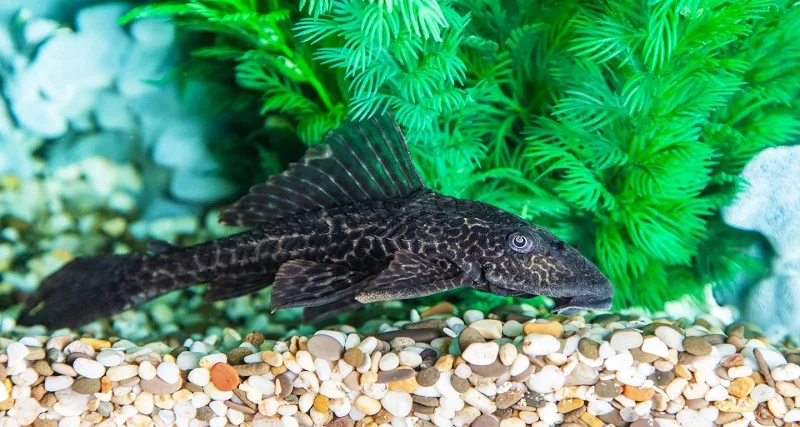
The armored catfish (Loricariids) are suckermouth catfish that have cleaning behavior. They have peaceful behavior and can be sociable, making them easily and quickly adapt to the aquarium community life.
They are nocturnal and, therefore, they will easily avoid bright lighting.
Black Ghost Knifefish
- Scientific Name: Apteronotus albifrons
- Origin: South America
- Water temperature: 23 – 27°C (74 – 80°F)
- Water pH: 6.5 – 8.0
- Size: 20 inches (~51 cm)
- Temperament: Semi-aggressive/ Shy, sometimes territorial
- Lifespan: 10-15 years
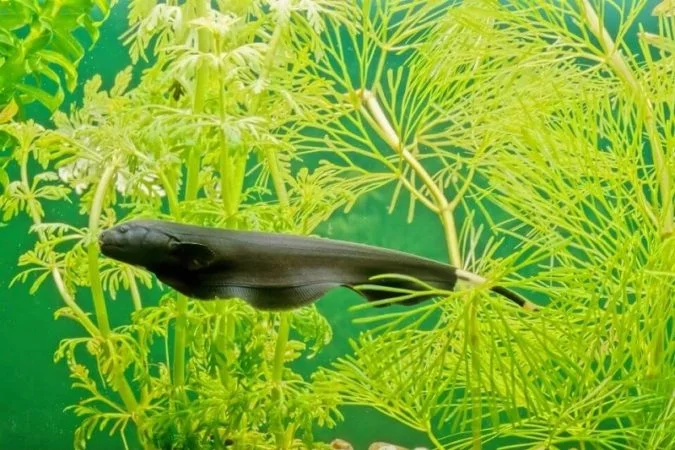
Bottom dwellers are ideal for becoming blue gularis killifish tank mates, and the Black Ghost Knifefish can be one of the best candidates.
With a shy and quiet temperament, this bottom-dwelling species can go well with many fish varieties.
The Ghost Knifefish are weakly electric species, so in the aquarium, they may need a tubular, enclosed space to protect themselves from the electrical impulses of their tank mates.
Barbs
- Scientific Name: Puntigrus tetrazona, Pethia nigrofasciata, Pethia conchonius
- Origin: Asia
- Water temperature: 23 – 27°C (74 – 80°F)
- Water pH: 6.5 – 8.0
- Size: 1 – 16 inches (2.5 – 40 cm)
- Temperament: Peaceful, Semi-Aggressive
- Lifespan: 10-15 years
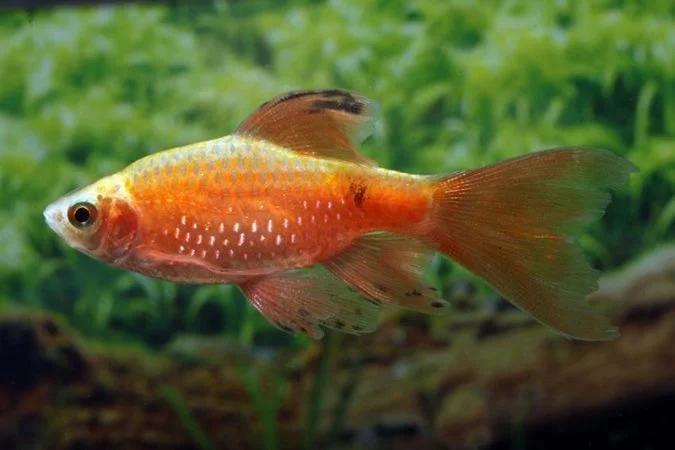
This species can be a bit aggressive towards slow or long-finned tank mates like Bettas, yet can get along splendidly with the large Killifish like the blue gularis, who also have a semi-aggressive temperament.
Twig Catfish
- Scientific Name: Farlowella
- Origin: South America
- Water temperature: 23 – 26°C (75 – 79°F)
- Water pH: 6.0 – 7.0
- Size: up to 9 inches (22.86 cm)
- Temperament: Peaceful
- Lifespan: 5-15 years
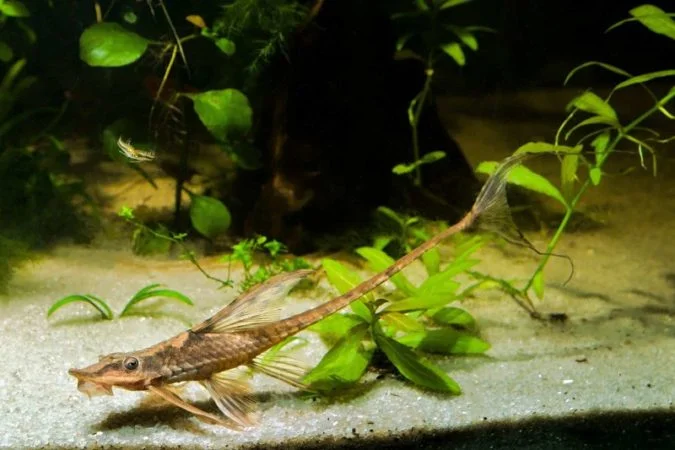
Being members of the Loricariidae fish family, the Twig Catfish are somehow similar to their relatives in terms of being vegetarians and usually feeding on soft algae and biofilms accumulated in the aquarium environment.
You should keep them well fed by providing blanched vegetables and sinking Spirulina wafers.
Tank setup
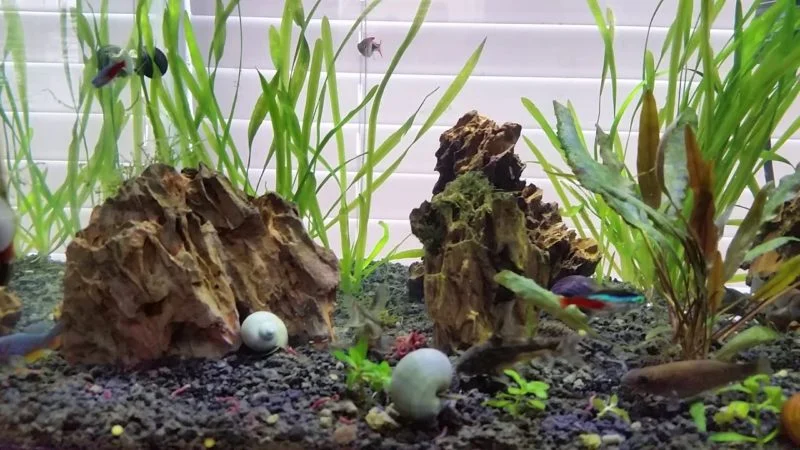
Use a dark substrate like peat moss or a similar material, and make sure there are enough plants and pieces of wood to provide cover in the tank. It is also advised that you use floating plants to offer shade for them. Also, It is necessary for the cover to be very tight fitting since the species is an adept jumper.
These fish require a minimum tank capacity of 26 gallons, which is about 100 liters. 73-79 degrees Fahrenheit, a pH of 6.0-7.5, and total hardness ranging from 5 to 19 degrees Fahrenheit are ideal conditions for them in their tank.
Video: SSS Ep 3 Blue Gularis Killifish (Fundulopanchax sjoestedti)
FAQs
Where do the Blue Gularis Killifish live?
The Blue Gularis is one of the biggest Killifish species and is mostly found in Nigeria and Cameroon in West Africa.
Does Blue Gularis only come in blue color?
Similar to many other Killifish species, the Blue Gularis is available in a variety of various color morphs that are derived from both captive breeding efforts and naturally occurring regional, varieties such as Gularis “Dwarf Red” and “Niger Delta.”
Are Blue Gularis Killifish aggressive?
Blue Gularis may be a difficult species to keep in community tanks. They have a range of temperaments, from neutral to rather aggressive. When fully grown, they are opportunistic predators that can readily consume a little Guppy or Tetra if given the opportunity. On rare occasions, Blue Gularis may nip at tankmates who are unable to feed them.
What is Blue Gularis Killifish Lifespan ?
The lifespan of a Blue Gularis Killifish is around five years. Some factors can affect its lifespan. If the fish is kept in captivity, its lifespan may be shorter due to the stress of living in an unnatural environment. Additionally, if it is not well cared for, its lifespan will be shortened. If it is well taken care of and kept in the perfect aquarium, its lifespan will be much longer.
Reference:

Annette M. Chaney is an experienced marine biologist with over 20 years of experience as an aquarist and fishkeeper. She started her first aquarium at a young age, filling it with frogs and goldfish obtained from the ten-cent pet store.
Annette grew up caring for and breeding African Cichlids, which led to a hobby in high school that doubled as a profitable means. Attending Reed College gave her time to solidify herself as an accomplished aquarium caretaker with an eye for sales. After that, from 2009 – 2013, she studied at Roger Williams University – one of the most prestigious universities for Aquaculture and Aquarium in USA. She is the founder of AquariumCircle since 2010.
